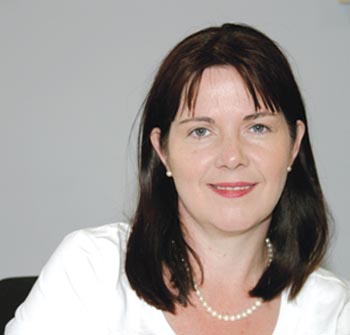Analysis

Add it up
In Analysis
Bookmark
Record learning outcomes
I don’t need to tell any of you that pharmacy is more than the sum of its parts
Chair of Pharmacy Voice Claire Ward suggests that better use of teamwork in independent community pharmacies could hold the key to progress
 By the time you read this we might be all the wiser, but as I write this we still await whatever is to be the final outcome from the ‘2016/17 and beyond’ consultation, post-negotiation, post-consultation, post- petition, post-campaign. Whatever the outcome, there seems to be a general acceptance that things need to change.
By the time you read this we might be all the wiser, but as I write this we still await whatever is to be the final outcome from the ‘2016/17 and beyond’ consultation, post-negotiation, post-consultation, post- petition, post-campaign. Whatever the outcome, there seems to be a general acceptance that things need to change.
This outcome could be pharmacy conclusively demonstrating the utility of the network to keep people safe, to improve the use of medicines, and to provide a local focus for health improvement. Or it could be that builds on the developments of the past to focus more attention on those most at risk, in most need, or for whom the system as a whole can do more.
In my last column, I talked about community pharmacies that were not sitting back and waiting for others to tell them why and how to change. Those pioneers are seizing the initiative and making changes to the way they deliver services, because they already see the need for change and development. That is only part of the drive that we should welcome and encourage more of.
Where to focus
Time then to think about what we can make more of, and that includes the pharmacy team. It should come as no surprise that the extended role of registered technicians in some parts of the hospital sector is driving some of the central thinking that’s challenging the community pharmacy model (although the Carter Review gave many of our hospital colleagues a ‘could do better’ school report).
We all need to understand what’s happening there, because medicines reconciliation services performed routinely on the wards of many of the UK’s hospitals by pharmacy technicians, to give just one example, could be coming soon to a neighbourhood near you. The discharge medicines review service in Wales is demonstrating the benefits of preventing hospital rapid returner patients from coming straight back in by ensuring their medicine changes follow through into primary care. When Trusts take note of this, they’re going to be looking at not only what can be done, but who can do it.
I don’t need to tell any of you that pharmacy is more than the sum of its parts. As we have all been trying to demonstrate through the recent campaigns, and in meetings with anyone who might be able to influence an austerity-flavoured government, pharmacy is a vital social service. The pharmacy network hosts vast amounts of social capital which is exercised through the professional expertise of its pharmacists, who deploy their clinical judgement day in, day out.
The two million signatures of patients collected throughout community pharmacy as part of the campaign against the cuts is testament to that. But its social capital resides largely in its staff, usually local
people providing services direct to their neighbours, friends and family members.
Increasingly, those staff members – be they pharmacy technicians, health champions, phlebotomists, or efficient and helpful counter staff – are taking on more responsibility, responding to the challenge of change, and thriving on it. Some great recent examples of award winners from community pharmacies show just how willing many are to take on more responsibility and to do things a little differently.
Volume vs services
The sector has been wrestling with the volume versus services conundrum for years. The background to the proposed funding cut is an unprecedented interest in the skills of pharmacists and what they can bring to a hard-pressed, funding-strapped NHS.
With GP practices facing their own demographic challenge, which is prompting many of our medical colleagues to finally admit that they can’t do it all, pharmacist skills in managing the cost of drugs, in choosing the right medicines, and engaging with patients in their optimum use, are much in demand. What we have not done yet is work out how community pharmacists’ skills can be utilised in this way. To make that a reality, we need to be clear where that time can come from, and using our staff in different ways must be woven into that thinking.
If they can deliver some medicines optimisation services themselves – and today’s pharmacy technicians are more than capable of taking on new responsibilities – then so much the better. Perhaps now is the time
to stop seeing technicians as competition in the dispensary, but as a vital component of the pharmacy team. Technical tasks can be appropriately delegated to technicians and they can be partners in reshaping the service for which pharmacists are increasingly capable. Like the GPs, you can’t do it all by yourself.
